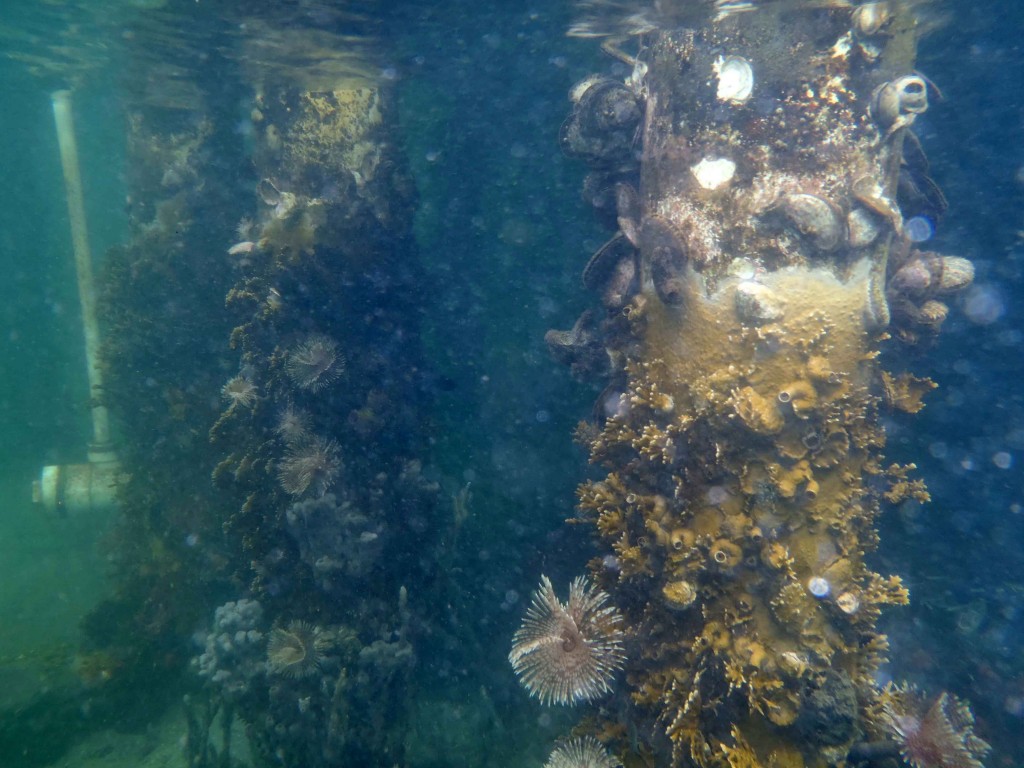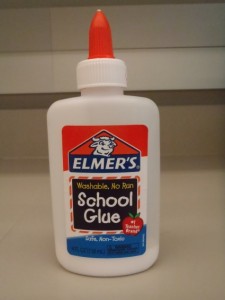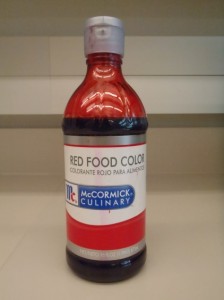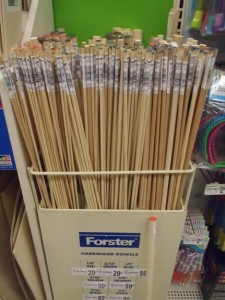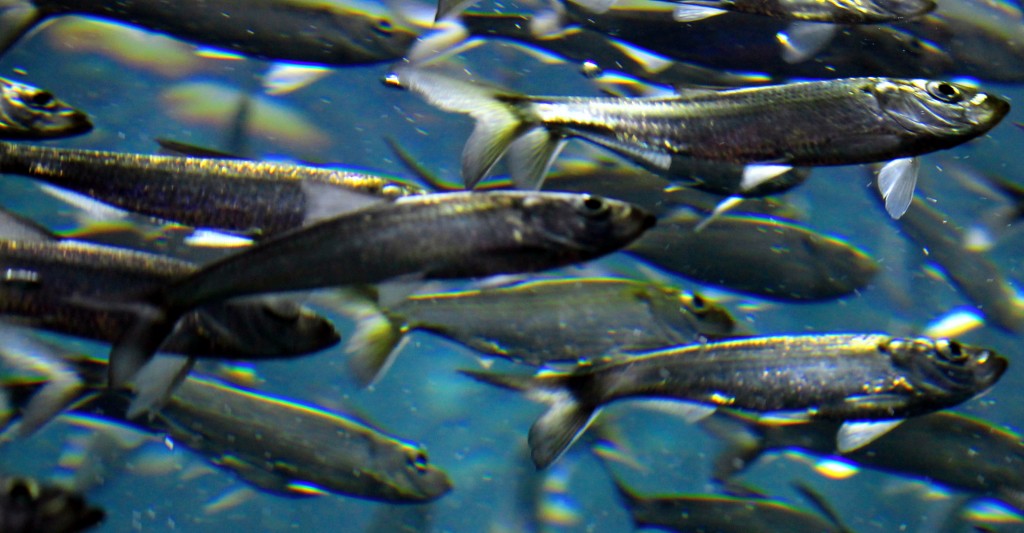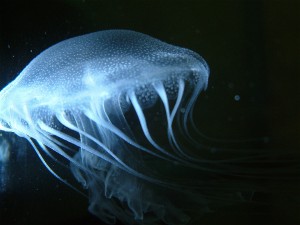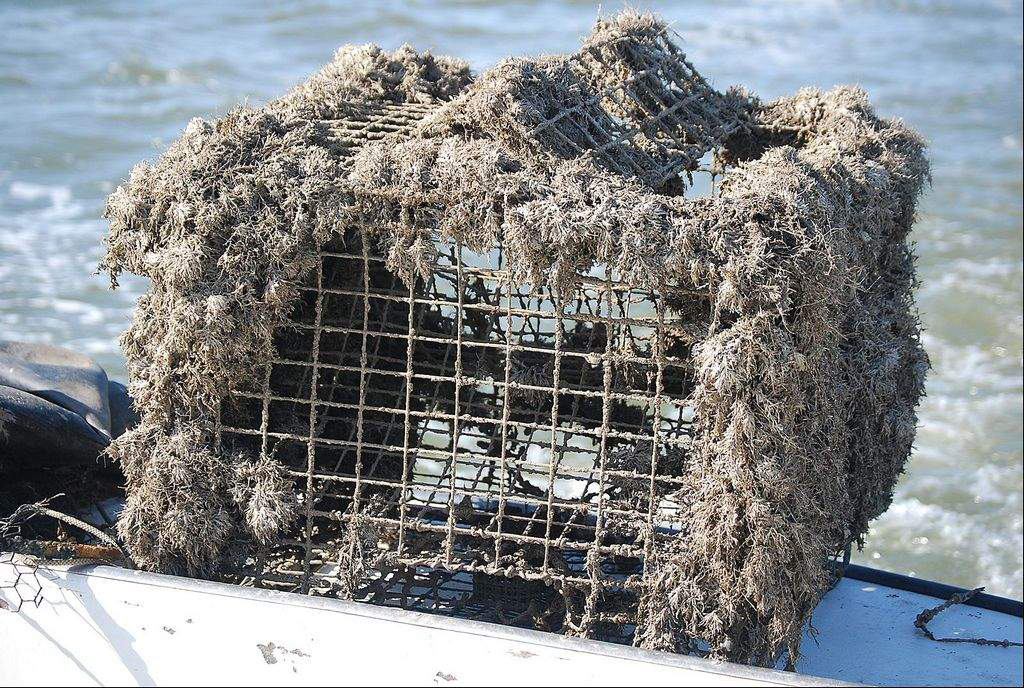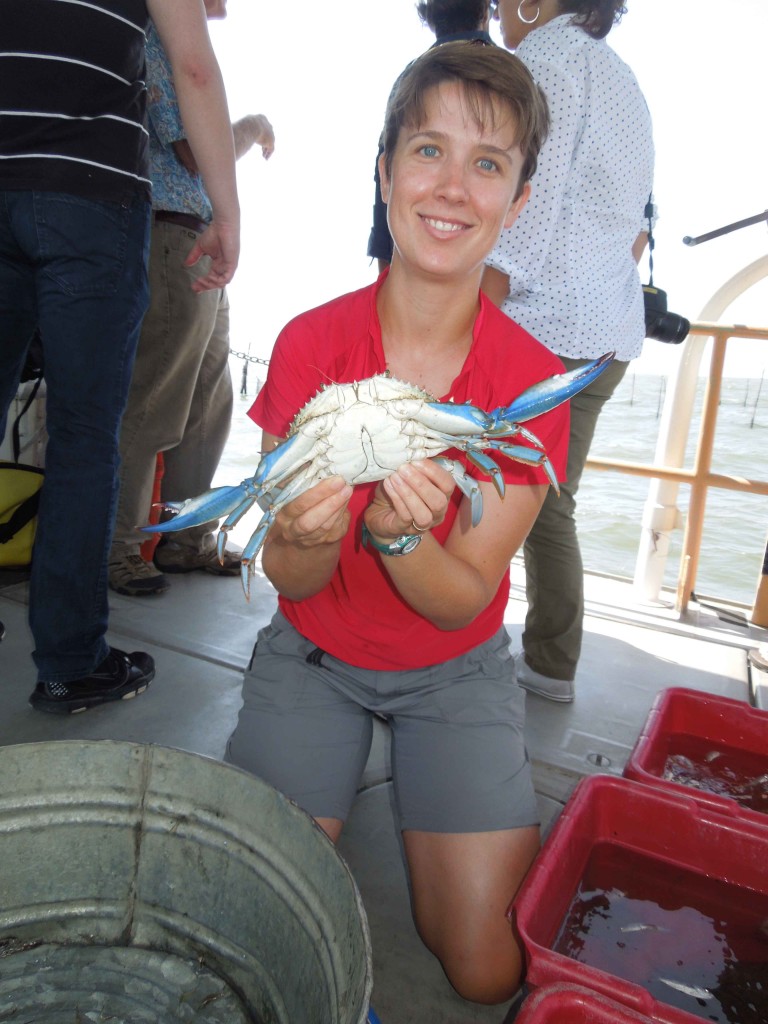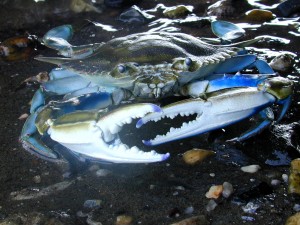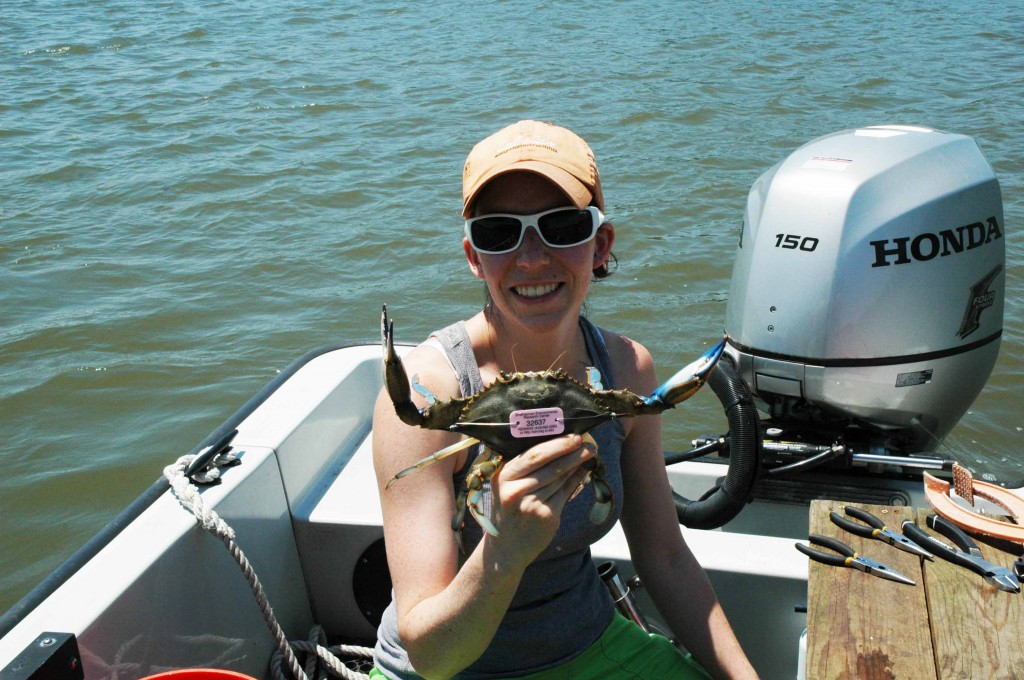by Kristen Minogue

Slides of oysters suffering different Dermo intensities as the parasite multiplies, from healthy (left) to severely infected (right). (SERC Marine Ecology Lab)
In shallow waters around the world, where nutrient pollution runs high, oxygen levels can plummet to nearly zero at night. Oysters living in these zones are far more likely to pick up the lethal Dermo disease, a team of scientists from the Smithsonian Environmental Research Center discovered in a new study published Wednesday.
Oxygen loss in the shallows is a global phenomenon, but it is not nearly as well known as the dead zones of the deep. Unlike deep-water dead zones, which can persist for months, oxygen in shallow waters swings in day-night cycles, called diel-cycling hypoxia. In nature it works like this: When algae photosynthesize during the day, they release oxygen into the water. But at night, when photosynthesis stops, plants and animals continue to respire and take oxygen from the water, causing dissolved oxygen to drop. Nutrient pollution, because it fuels massive algal blooms, can make the cycle even more drastic. The resulting lack of oxygen can cripple the oysters’ ability to fight off the parasite Perkinsus marinus that causes Dermo and slowly takes over their bodies.
Click to continue »


